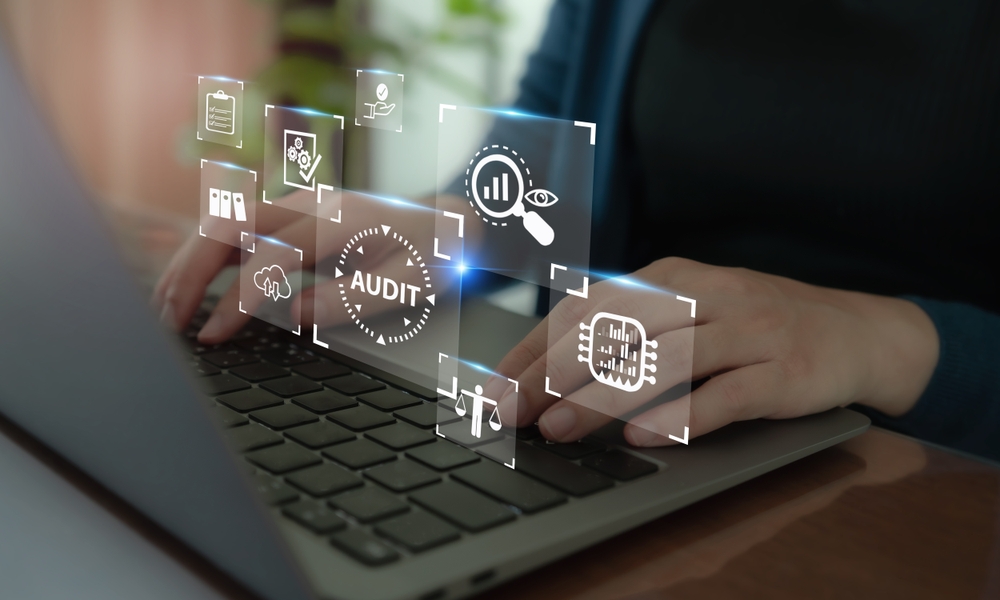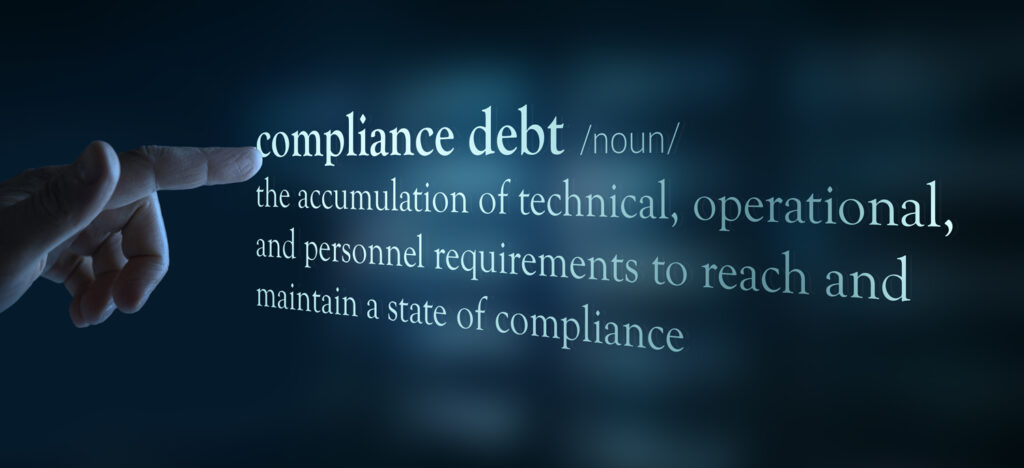The healthcare landscape is governed by a complex array of requirements designed to ensure the transferability of patient data while protecting its confidentiality, availability, and security.
For healthcare technology companies, demonstrating SOC 2 compliance, as outlined in the Trust Services Criteria (TSC) points of focus, demonstrates a robust commitment to safeguarding customer data. While a SOC 2 audit is not legally required or a certification, it is highly recommended for service providers that handle sensitive customer data, as demonstrated by its presence within the healthcare technology and cloud computing sectors. This blog is a valuable educational tool for healthcare organizations preparing for a SOC 2 audit. Let’s explore SOC 2, focusing on Type II, and how completing it can showcase a strong and ongoing dedication to protecting customer and patient data.
What is SOC 2?
SOC 2, or System and Organization Controls 2, is a framework developed by the American Institute of Certified Public Accountants (AICPA). SOC 2, outlined by the TSC includes Security, Availability, Processing Integrity, Confidentiality, and Privacy. Its main goal is to validate the effective implementation and management of effective internal security controls of third-party service providers.
- Security: Measures to protect against unauthorized access.
- Availability: Ensuring the system is available for operation and use.
- Processing Integrity: Guaranteeing that system processing is complete, valid, accurate, and timely.
- Confidentiality: Protecting information designated as confidential.
- Privacy: Safeguarding personal information collected, stored, used, and disclosed.
SOC 2 and Its Importance for Technology Companies

Data breaches are not just financially costly—they can be catastrophic and have a significant impact on patient safety if your company handles protected health information (PHI). SOC 2 compliance can help mitigate these risks by ensuring that robust security controls are in place. Additionally, it can enhance your market credibility, making your services more attractive to potential clients who prioritize data security.
Key trends supporting why customers choose to undergo SOC 2 audits:
- Rising Cybersecurity Risks: Data breaches are on the rise, with around 52 million incidents globally in the second quarter of 2022. This increase in cyber events highlights the need for strict compliance protocols such as SOC 2 to safeguard sensitive information (ISACA).
- A significant development is the increasing alignment of data governance with compliance initiatives: Businesses understand the importance of high-quality and timely compliance data in upholding a strong compliance position. This fusion contributes to a more thorough and precise assessment of a company’s general compliance standing (Security Boulevard).
- Stakeholder Expectations: Key stakeholders are placing a greater emphasis on organizations showcasing strong cybersecurity and data protection practices. By adhering to SOC 2 compliance, a well-regarded framework, businesses can reassure stakeholders of their dedication to upholding top-notch security and privacy standards (ISACA).
Here are a few reasons why companies opt to undergo a SOC 2 audit:
- Customer Assurance: Demonstrates to clients that your organization adheres to best practices in data security and privacy.
- Competitive Advantage: Differentiates your business from competitors by showing a commitment to industry recognized standards of data protection.
- Risk Management: Helps identify and mitigate potential security risks within your organization.
- Compliance: Assists in complying with other regulations and standards that require stringent data protection measures.
- Partner Requirements: Some business partners or clients may mandate a SOC 2 report as part of their procurement process.
SOC 2 Audit – Is it required?

The SOC 2 audit is a procedure that scrutinizes service providers’ management of third-party data conducted by a licensed CPA firm. Although not mandated by regulations, many healthcare organizations prioritize due diligence and care when evaluating service providers, particularly those handling sensitive data such as PHI.
SOC 2 Type I and SOC 2 Type II – A High-Level Overview
SOC 2 Type I Audit: A Snapshot in Time: A SOC 2 Type I audit assesses the design and implementation of an organization’s controls at a specific point in time. Essentially, it answers the question: “Are the necessary controls in place as of this date?” This type of audit is typically less time-consuming and less expensive than a Type II audit. It provides a preliminary evaluation, verifying that the controls are suitably designed to meet the Trust Services Criteria.
Key points about SOC 2 Type I audits:
- Focus: Evaluation of control design.
- Timeframe: Specific point in time.
- Cost: Generally lower.
SOC 2 Type II Audit: Over a Review Period
In contrast, a SOC 2 Type II audit goes a step further by evaluating not only the design of controls but also their operational effectiveness over a period of time. This type of audit answers the question: “Are the controls operating effectively throughout the audit period?” Typically, the period ranges from six to twelve months. A Type II audit provides a more comprehensive and reliable assessment of an organization’s control environment, demonstrating sustained compliance and operational excellence.
Key points about SOC 2 Type II audits:
- Focus: Evaluation of control design and operational effectiveness.
- Timeframe: Over a period of time (usually 6-12 months).
- Cost: Generally higher due to the extensive nature of the audit.
The SOC 2 Type II audit is significant as it offers continuous assurance to stakeholders by demonstrating that the controls are not only in place but also operational (Scrut.io).
Essentially, SOC 2 audits stem from the urgent need to secure sensitive health information and is often considered a cost of doing business. Regular audits help identify and contextualize potential gaps, as outlined in the TSC. They are integral to obtaining invaluable insights to an organization’s security posture, building trust, decreasing risk by enabling targeted cybersecurity investment, and encouraging efficient business practices.
Commitment to Data Protection and Rigorous Compliance Standards
Successfully completing a SOC 2 audit without a “qualified” opinion, can demonstrate your company’s commitment to effective data protection. It signifies that your firm has sufficiently designed and implemented relevant security controls and can solidify your firm’s value proposition and competitiveness within the market. Moreover, completion of a SOC 2 audit underscores your dedication to maintaining compliance standards. Your SOC 2 report is generally relevant for a year, indicating that your company is continually reevaluating its processes and staying updated with the latest security standards.
Demonstrating adherence to applicable Trust Service Criteria (TSC) principles can also serve as a powerful marketing strategy. By showcasing a commitment to meeting the rigorous standards set by TSC, companies not only enhance their credibility but also establish a reputation for reliability and security. This can be particularly advantageous when aiming to attract prospective clients who prioritize the protection of sensitive data. Successful completion of SOC2 audit further strengthens this stance, as it provides a third-party validation and attestation of the company’s ability to properly safeguard sensitive information.
A SOC 2 audit involves an evaluation of your company’s implementation of specific policies, processes, and technology controls. These may include:
| Information Security Management | Audit Logging and Monitoring |
| Change Management | Third-party Risk Management |
| Password and Privilege Management | Data Classification |
| Risk Management | Acceptable Use |
| Incident Response | System/Software Security Requirements |
| Business Continuity and Disaster Recovery |
Meeting the requirements of a SOC 2 compliance audit can sound daunting, but it’s essential for your company to establish precise policies, procedures, and technologies to maintain high standards of security and compliance. These include network and endpoint security, encryption, key management, vulnerability identification, identity verification, access control, and data backup and duplication. Additionally, it’s crucial to develop a mechanism for auditing logs, monitoring security system modifications, and safeguarding vital information. By implementing these protocols, you demonstrate to external auditors your robust cyber risk management strategies.
It’s essential to remember that a SOC 2 audit can enable companies to better prepare and address risks that could lead to a security incident, such as a data breach. Thus, the primary purpose is not just about successfully completing the audit, but more so about adopting, aligning, and adhering to robust information security standard that can enable an organization to reduce cyber risk and defend against potential threats.
How can CSPM technology and a managed services partner help with SOC 2 Audits?
Cloud Security Posture Management (CSPM) providers offer industry-recognized standards for data protection based on best practices. They use advanced controls and countermeasures to address security risks and keep your data protected. Moreover, they’re always monitoring the threat landscape. With continuous monitoring of your cloud environment and systems, they can identify suspicious activity and take quick action to prevent significant security incidents, which can involve a breach. They don’t just find the weak spots—they help you fix them.
Finally, CSPM and Managed Security Service Providers (MSSP) can tailor their services to meet your specific needs. Whether it is regulations such as HIPAA, GDPR, or industry standards and frameworks, such as TSC for SOC 2 compliance, they have you covered. They will work with you to understand your unique challenges and objectives, developing a customized plan that ensures you can focus on your core business initiatives.
If your organization is interested in pursuing SOC 2 compliance, consider the following steps:
- Consult With Experts: Engage with security and compliance experts who can guide you through the process.
- Utilize Compliance Software: Invest in tools that streamline the compliance process.
- Stay Informed: Keep up to date with the latest developments in data security and compliance.
At the very least, a commitment to completing a SOC 2 audit signals to the market that your organization is focused on security, compliance and privacy.
For more resources, visit reputable sites like the AICPA and ISACA.
Your Data Security Can't Wait.


